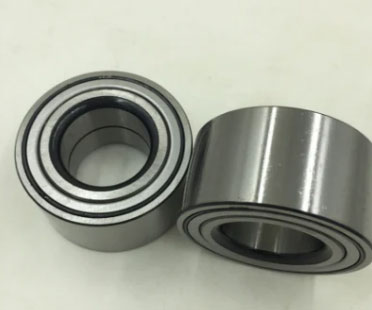Home / News / A Comprehensive Guide to Spindle Bearing Replacement
A Comprehensive Guide to Spindle Bearing Replacement
Introduction
Spindle bearings play a crucial role in the functioning of various machines, such as CNC machines, milling machines, and lathes. They provide support and stability to the spindle, ensuring its smooth rotation and minimizing vibration. Over time, spindle bearings can wear down or become damaged, negatively impacting the performance and accuracy of the machine. This article aims to provide a step-by-step guide to spindle bearing replacement, helping you maintain the efficiency and longevity of your equipment.

Step 1: Gathering Necessary Tools and Materials
Before starting the replacement process, gather the following tools and materials:
Replacement spindle bearings
Bearing puller
Bearing press or arbor press
Soft mallet or rubber hammer
Wrench set
Allen key set
Cleaning solvent
Clean rags or paper towels
Lubricant
Torque wrench
Safety glasses
Step 2: Disconnecting Power and Removing Spindle Assembly
Ensure your safety by disconnecting the power to the machine. Then, remove the spindle assembly from the machine by loosening and removing the necessary bolts, nuts, or clamps. Keep track of all components and their locations for easier reassembly.
Step 3: Removing the Old Bearings
Using a bearing puller, carefully remove the old bearings from the spindle shaft. Apply even pressure to avoid damaging the spindle or other components. If the bearings are difficult to remove, apply heat using a heat gun to expand the metal and facilitate removal. Be sure to wear safety glasses during this process.
Step 4: Cleaning the Spindle Shaft and Bearing Housing
Clean the spindle shaft and bearing housing using a cleaning solvent and clean rags or paper towels. Remove any debris, dirt, or old lubricant to ensure proper seating of the new bearings.
Step 5: Installing the New Bearings
Before installation, check the new bearings for any defects or damage. Apply lubricant to the spindle shaft and new bearings. Using a bearing press or arbor press, carefully press the new bearings onto the spindle shaft. Ensure they are seated evenly and completely to avoid damage or misalignment.
Step 6: Reassembling the Spindle Assembly
With the new bearings installed, reassemble the spindle assembly by reversing the disassembly process. Make sure all components are properly aligned and securely fastened. Use a torque wrench to tighten bolts and nuts to the manufacturer's specifications.
Step 7: Reinstalling the Spindle Assembly
Reinstall the spindle assembly into the machine, ensuring proper alignment and secure fastening. Reconnect the power and perform a test run to ensure smooth operation and accurate performance.
Conclusion
Spindle bearing replacement is a necessary maintenance task to ensure the optimal performance and longevity of your machine. By following this step-by-step guide, you can confidently replace worn or damaged spindle bearings and keep your equipment running smoothly. Always consult the manufacturer's guidelines and consider seeking professional assistance if you are unsure about any aspect of the replacement process.
- Previous: Ultra-High Speed Angular Contact Bearings With Sealing B719 Series
- Next: The Role and Advantages of High-Speed Spindle Bearings in Modern Machinery













